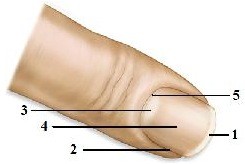Describe the mechanisms of the inflammation process following the introduction of bacteria into a cut in the skin. Include information about the cause of the heat, redness, and edema associated with inflammation and describe inflammation's specific benefits to the body's defense
What will be an ideal response?
After the skin is cut, mast cells in the injured region release histamine, which causes local vasodilation and increased capillary permeability. The increased blood flow to the region causes redness and heat, and more liquid leaking out of the more permeable capillaries causes local swelling (edema). Increased blood flow brings more white blood cells to the region and these cells can help destroy bacteria in the cut.
You might also like to view...
M-CSF is a growth factor that stimulates the production of monocytes from myeloblast cells
Indicate whether this statement is true or false.
Clonal selection of B cells ________
A) occurs during fetal development B) cannot occur in the presence of antigens C) results in the formation of plasma cells D) only occurs in the secondary immune response
 Which number indicates the eponychium?
Which number indicates the eponychium?
A. 1 B. 2 C. 3 D. 4 E. 5
Which are formed elements of the blood? Choose all that apply.
A. Leukocyte B. Thrombocyte C. Megakaryocyte D. Erythrocyte